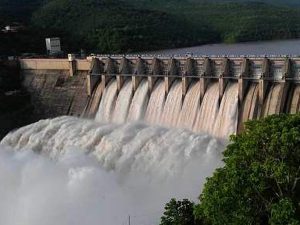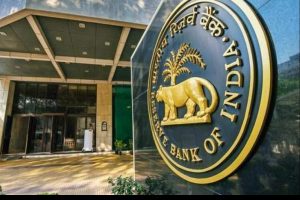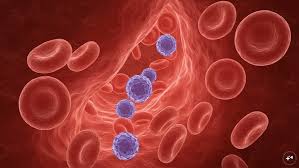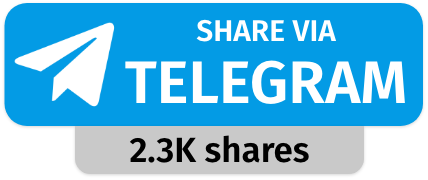Today’s Current Affairs: 31st July 2025 for UPSC IAS exams, State PSC exams, SSC CGL, State SSC, RRB, Railways, Banking Exam & IBPS, etc
Table of Contents
Schengen Visa:

Indian travellers with a clean visa history now have access to a fast-tracked, long-term Schengen visa under a new “cascade” system rolled out by the European Commission.
- A Schengen visa is an entry permit that allows non-EU nationals to temporarily visit or transit through the Schengen Area, which comprises 29 European countries.
- Within this area, there are no internal borders, allowing for unrestricted movement between the countries.
- The visa is valid for up to 90 days within a 180-day period, which begins the day you enter a Schengen country.
- Schengen visas are issued for various purposes, such as tourism, business, visiting family, medical treatment, and participation in cultural or sporting events.
- The visas do not give the right to work.
- There are currently 29 European countries in the Schengen.
- Members of this area include 25 of the 27 EU member states (except for Cyprus and Ireland) and all members of the European Free Trade Association (Iceland, Liechtenstein, Norway and Switzerland).
- Being part of this area means that countries:
- Do not carry out checks at their internal borders, except in cases of specific threats;
- Carry out harmonize controls at their external borders, based on clearly defined criteria.
- The Cascade Visa Scheme rewards “trusted travellers” with a documented travel record.
- Indian citizens who have obtained two Schengen visas within the past three years are now eligible for a two-year multi-entry visa.
- This can later be upgraded to a five-year visa, provided their passport is valid for the full term.
Tsunami : After Earthquake Struck Russia

A powerful 8.8-magnitude earthquake struck Russia’s Kamchatka Peninsula recently, triggering tsunami warnings across the northern Pacific, including Alaska, Hawaii, and down to New Zealand.
- A tsunami is a series of waves generated by a large and sudden displacement of the ocean.
- Tsunamis can have devastating and wide-ranging effects, especially in coastal regions.
- The word tsunami is composed of the Japanese words “tsu” (which means harbor) and “nami” (which means “wave”).
- Large earthquakes below or near the ocean floor are the most common cause (about 80% of all known tsunamis are triggered by earthquakes), but landslides, volcanic activity, certain types of weather, and meteorites can also cause tsunamis.
- Not all earthquakes cause tsunamis; they must be strong and shallow (at least 6.5 magnitude and less than 70 km from the Earth’s surface), and move the seafloor vertically.
- Tsunamis radiate outward in all directions from their source and can move across entire ocean basins, around islands, and into bays, sounds, and up rivers.
- Out in the depths of the ocean, tsunami waves do not dramatically increase in height.
- But as the waves travel inland, they build up to higher and higher heights as the depth of the ocean decreases.
- The speed of tsunami waves depends on ocean depth rather than the distance from the source of the wave.
- Tsunami waves may travel as fast as jet planes over deep waters, only slowing down when reaching shallow waters.
- Tsunamis can have heights of up to 30 m (98 ft) and reach speeds of 950 km per hour.
Dorjilung Hydropower Project:

With infrastructure work starting on Bhutan’s Dorjilung Hydropower Project, Tata Power’s stake signals India’s growing private-sector role in cross-border renewable energy diplomacy.
- It is a planned 1125 MW run-of-river project situated in the eastern Lhuentse and Mongar Districts of Bhutan on the Kurichhu River, a tributary of the Drangmechhu that flows into India.
- At a height of approximately 139.5 m, the concrete-gravity dam channels nearly 287 m3/s through a 15 km headrace tunnel to an underground powerhouse housing six Francis turbines, designed to generate around 4.5 terawatt-hours (TWh) annually.
- The total estimated cost of the project is $1.7 billion.
- The project is financed by the World Bank.
- In November 2024, Bhutan’s Druk Green Power Corporation (DGPC) signed an MoU with Tata Power Company Limited for the joint development of the project under a Public-Private Partnership (PPP) model, with DGPC holding a 60% and Tata Power a 40% stake.
- The project is expected to be commissioned by early 2032.
Barbados threadsnake : World’s smallest known snake Rediscovered

World’s smallest known snake Barbados threadsnake was rediscovered after vanishing for decades
- It is a tiny snake belonging to the family Leptotyphlopidae.
- The snake is blind, burrows in the ground, eats termites and ants and lays one single, slender egg.
- It reaches a maximum adult length of only 10.4 cm (4.1 inches) and an average weight of 0.6 g (0.02 ounce), it is thought to be the world’s smallest known snake.
- They are solitary fossorial creatures adapted to burrowing.
- They are nocturnal and during the day usually hide under rocks.
- Due to their diet preferences, they are often found near ant and termite nests.
- The pheromones these snakes produce protect them from attack by termites.
- Its habitat is most likely limited to the forests of eastern Barbados. They inhabit tropical dry forests.
- Barbados threadsnakes are found on the Caribbean island of Barbados
- Barbados threadsnakes are carnivores and their diets consist mostly of termite or ant larvae.
- They are oviparous meaning they lay eggs to reproduce.
- Conservation Status: Critically Endangered (IUCN Red List)
- Threats: Habitat loss is the main threat to the Barbados threadsnake.
Skill Impact Bond:

The Minister of State for Skill Development and Entrepreneurship cited the Skill Impact Bond (SIB) as delivering measurable social impact.
- It is an innovative financing tool aimed at improving employment outcomes for young people,
- Under this initiative, first skills are provided to young people, and then jobs are provided to them or they are made capable to perform better within their current jobs.
- India’s Skill Impact Bond (SIB) was launched in November 2021.
- It is the country’s first development impact bond focused on employment.
- It is backed by the Ministry of Skill Development and Entrepreneurship through the National Skill Development Corporation,
- Its objective is to benefit 50,000 young Indians over four years, with 60% of the beneficiaries being women.
- This innovative outcomes-based financing tool uses private sector capital and expertise, focusing on job placement and retention rather than merely on training and certification.
- There are ‘risk investors’ usually from the private sector who provide funding to service providers (organisations that deliver skills training and support job placement).
- Then there are outcome funders who repay the ‘risk investors’ if the programme has met its employment targets. There is also a third-party evaluator who verifies employment outcomes.
Digital Payments Index:

The Reserve Bank of India (RBI) announced that its Digital Payments Index (RBI-DPI) surged to 493.22 in March 2025, up from 465.33 in September 2024.
- It has been constructed by the Reserve Bank of India to measure the extent of digitisation of payments across the country.
- It was first launched in January 2021.
- It is based on multiple parameters and reflects the expansion of various digital payment modes accurately.
- It is a first-of-its kind index to measure the spread of digital payments across the country.
- It has been constructed with March 2018 as the base period, i.e., the DPI score for March 2018 is set at 100.
- The DPI index comprises five broad parameters that enable the measurement of deepening and penetration of digital payments in the country over different time periods. The parameters include:
- Payment enablers (25 per cent weightage in the index)
- Demand-side and supply-side payment infrastructure factors (10 per cent each)
- Payment performance (45 per cent)
- Consumer centricity (5 per cent)
- Each of the parameters has sub-parameters, which, in turn, consist of various measurable indicators.
CRIB Blood Group:

A new blood group CRIB, has been discovered in a South Indian woman from Kolar district in Karnataka.
- It is part of the Cromer (CR) blood group system and, in recognition of its origin, has been officially named CRIB, with ‘CR’ representing ‘Cromer’ and ‘IB’ standing for ‘India’, ‘Bangalore’.
- This historic announcement was made at the 35th Regional Congress of the International Society of Blood Transfusion (ISBT) held in Milan, Italy.
- It is a new blood group, previously unidentified anywhere in the world.
- After ten months of research and molecular testing, international experts identified a new antigen in the Cromer (CR) blood group system.
- The blood group nomenclature is decided by the International Society of Blood Transfusion.
- Identifying new antigens like CRIB enhances global transfusion safety, improves compatibility testing, and lays the foundation for better donor matching in future medical emergencies.
- Cromer blood group system involves 12 high-prevalence and 3 low-prevalence antigens on decay-accelerating factor (DAF).
U.S. President announced a 25% tariff on Indian imports:
U.S. President announced a 25% tariff on Indian imports effective August 1, 2025, citing high trade barriers and India’s continued energy and defence ties with Russia.The announcement includes a Russia-related penalty, linked to the proposed Russian Sanctions Act 2025.A 25% import tariff on all eligible goods shipped from India to the U.S. Additional penalty tariffs for India’s continued oil and defence trade with Russia.
Klyuchevskoy volcano:
The Klyuchevskoy volcano, the tallest active volcano in the Northern Hemisphere, after a massive 8.8 magnitude earthquake struck off Russia’s eastern coast.It is a stratovolcano, known for its steep conical shape and intense volcanic activity.Situated on the Kamchatka Peninsula, Russia, about 100 km from the Bering Sea. It is a Part of the “Ring of Fire“, a zone of frequent earthquakes and volcanic eruptions.
The Banking Laws (Amendment) Act, 2025:
The Banking Laws (Amendment) Act, 2025 will come into effect from 1st August 2025, introducing reforms to bank governance, audit transparency, depositor protection, and cooperative bank regulation.
The Banking Laws (Amendment) Act, 2025:
- A comprehensive reform law notified by the Ministry of Finance, the Act amends 5 key legislations governing the Indian banking sector to improve governance, transparency, and depositor safety.
- The limit for ‘substantial interest’ in banks is revised from ₹5 lakh to ₹2 crore.
This modernizes outdated thresholds (unchanged since 1968) to reflect inflation and sectoral growth. - Tenure raised from 8 to 10 years (excluding chairperson & full-time directors), in sync with the 97th Constitutional Amendment
- PSBs can now transfer unclaimed shares, interests, and bond redemptions to IEPF.
This aligns PSBs with norms under the Companies Act, ensuring efficient fund recycling. - PSBs are empowered to determine remuneration for statutory auditors, promoting better audit quality and enabling engagement of top-tier professionals.
- Reporting timelines to RBI are revised from “every Friday” to end-of-fortnight/month/quarter, easing operational burden and improving data relevance.




